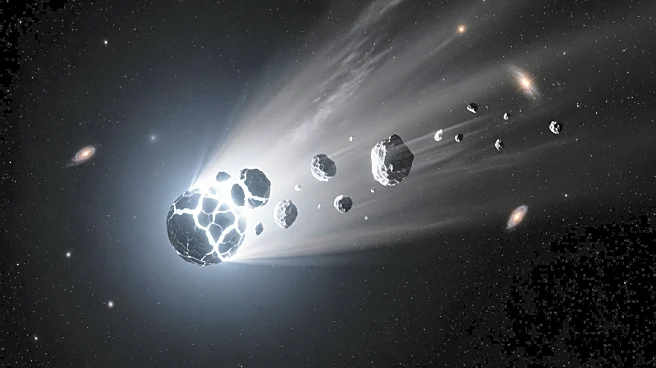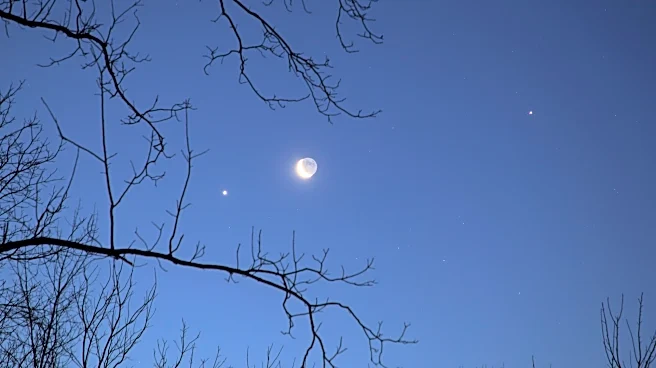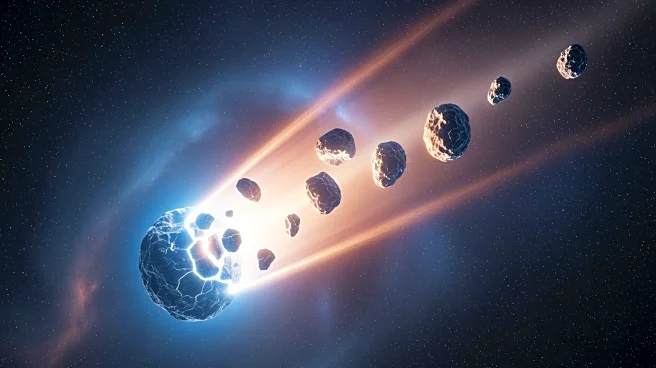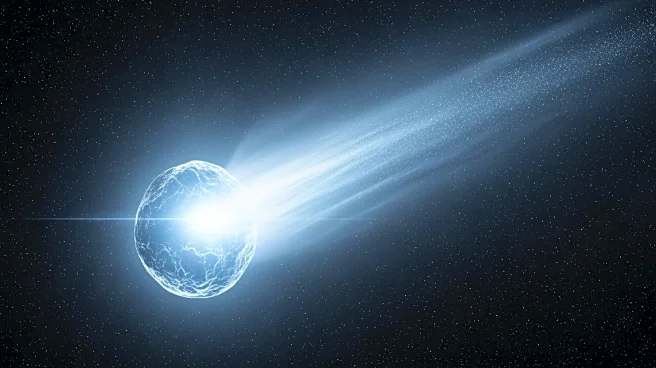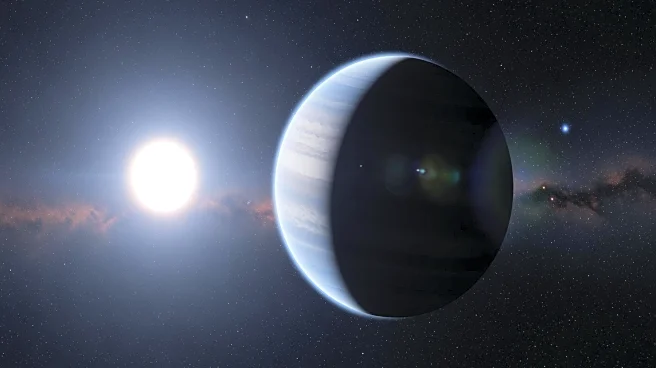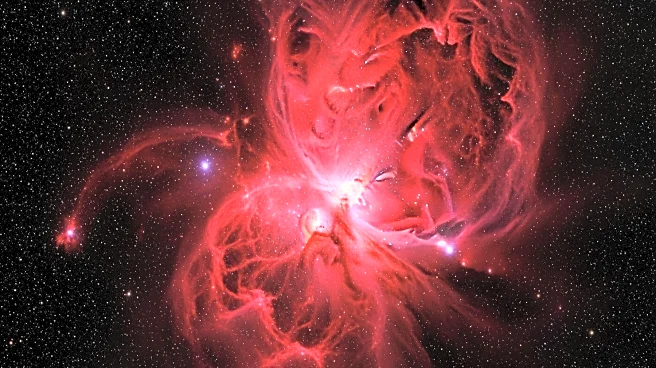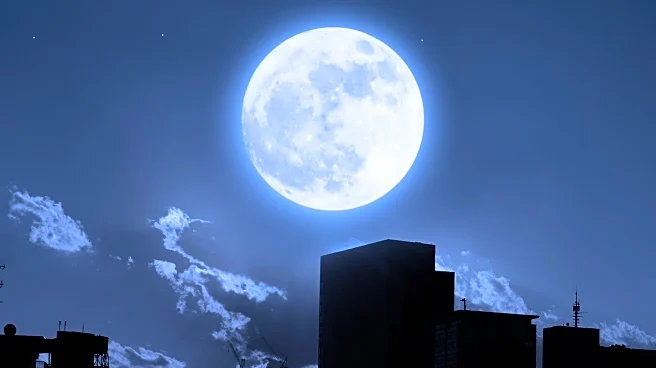What's Happening?
Astronomers have observed the disintegration of comet C/2025 K1 (ATLAS), which originated from the Oort Cloud beyond Neptune. Discovered in May by the Asteroid Terrestrial-impact Last Alert System (ATLAS), the comet reached
its closest point to the sun on October 8. Initially unnoticed, it gained attention earlier this month due to a rare golden glow in its coma and tail. On November 13, the comet began breaking apart into several pieces, a process captured in a timelapse animation by Austrian astrophotographer Michael Jäger. The comet's disintegration follows a sudden brightening event, leading to its fragmentation into three distinct pieces, with a smaller fourth fragment also observed. The comet's golden hue is attributed to a lack of carbon-bearing molecules in its nucleus.
Why It's Important?
The disintegration of comet C/2025 K1 (ATLAS) provides valuable insights into the behavior and composition of comets originating from the Oort Cloud. The rare golden glow observed in the comet's coma and tail offers a unique opportunity to study the chemical makeup of such celestial bodies, particularly the absence of certain carbon-bearing molecules. This event contributes to the broader understanding of cometary dynamics and the potential impact of gravitational forces during close solar encounters. The observations may also inform future studies on the stability and lifespan of comets as they travel through the solar system.
What's Next?
Astronomers and astrophotographers will continue to monitor the fragments of comet C/2025 K1 (ATLAS) as they remain visible in the constellation Leo. The ongoing observation of these fragments may provide further insights into the disintegration process and the comet's composition. Additionally, researchers may use this event to refine models predicting the behavior of comets during perihelion and their subsequent fragmentation. The findings could influence future comet observation strategies and enhance the understanding of cometary interactions with solar forces.
